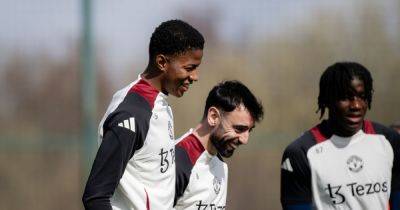How Rasmus Hojlund and Chido Obi's tactical switch worked for Manchester United
Come full-time at Bournemouth, nearly half of Manchester United's outfield players were No.10s.
Bruno Fernandes, Mason Mount and Christian Eriksen are specialists and Ruben Amorim is trying to mould Alejandro Garnacho into a playmaker. There was another auxiliary '10', though it was unclear who exactly that was.
The introduction of Chido Obi seemed to signal United's switch to a front two and, perhaps, the first time they had diverged from Amorim's 3-4-2-1. Amorim, ever loyal to the system, downplayed that notion.
"It’s just to adapt and you can see we change a lot of players," Amorim explained. "Players in positions they’ve never played. It was not a tactical aspect, just to understand the players will have extra time.
"So if you suffer a goal in transition, you lose your head. You have ten minutes more but if they score one goal in transition one against one could kill the game, these small things are not so much a tactical aspect."
Sending Obi on with Hojlund was logical. United had a man advantage and were 1-0 behind. Replacing one striker for another would have been senseless.
Obi and Hojlund had only previously shared the pitch for a handful of minutes at Tottenham, again when United were 1-0 down. In four of Obi's six substitute appearances, he has replaced Hojlund.
Had it happened for a fifth time at Bournemouth, Hojlund might have unloaded at Amorim. His body language was buoyant after Evanilson's expulsion on an afternoon that had hitherto been as frustrating for Hojlund as his recent appearances.
It was not a good day for United but it was a good day for Hojlund. His 96th-minute equaliser, a scruffy prod, was opportunistic, instinctive and deliberate, the kind of goal a striker lives for.
"We wanted the win,








